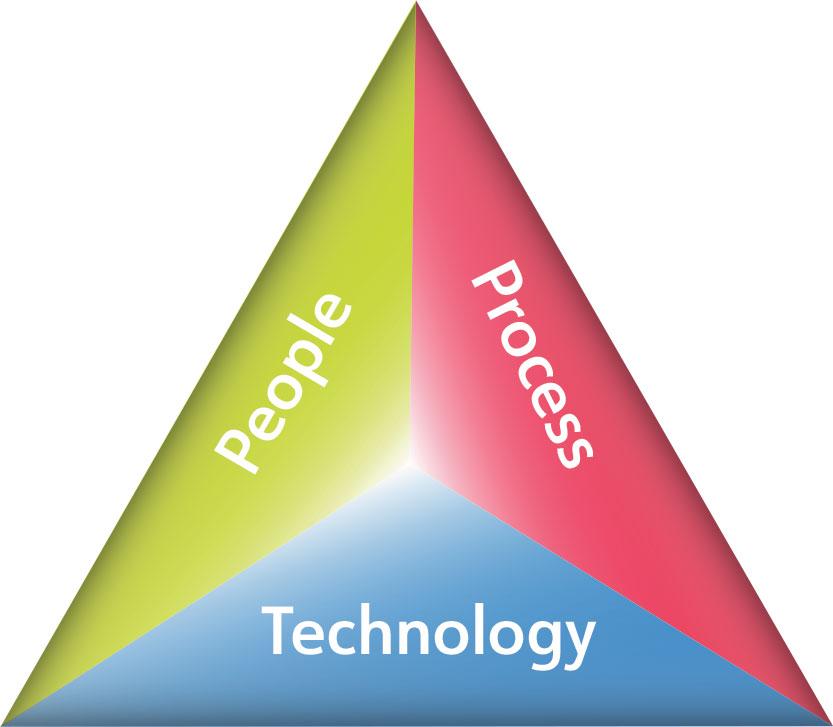Director
- FMA
- The Fabricator
- FABTECH
- Canadian Metalworking
Become digitally lean
Improve your company’s financial health with digital lean practices
- By Karim Keshavjee
- March 11, 2022
- Article
- Management

Automation created an imperative to improve factory floor productivity, but digital technologies create the imperative to improve throughput of the entire business. NanoStockk/iStock/Getty Images Plus
COVID-19 has created tremendous chaos across the globe yet has accelerated the uptake of digital technologies across all industries. Technological change that would normally have taken a decade to unfold, has been rolled out in less than two years.
The change that COVID-19 catalyzed is no ordinary change occasioned by a pandemic. COVID-19 actually has ushered in a new industrial era that has been taking shape for over the last decade. Popularly known as Industry 4.0, this new era makes many things so much easier, but causes so much confusion.
Just as electricity initially caused confusion but eventually transformed how factories ran in the last century, Industry 4.0’s innovations will transform how factories run in the coming century.
All innovations have similar effects on industries. They allow fewer skilled people to do the work of more skilled people. Mechanization and automation magnify physical effort. They allow people with process know-how to produce higher-quality goods, faster and at lower cost. Mechanization ushered in the era of Industry 3.0 and higher standards of living, with more people around the world rising out of poverty in the last 20 years than ever before.
Similarly, digitization, predictive analytics, and artificial intelligence (AI) are magnifying cognitive effort, making white collar work easier, faster, and cheaper.
What does this have to do with manufacturing? In a word, everything.
Implementing digitalization and AI doesn’t mean that we can or will get rid of highly skilled people, but that the highly skilled people we do have will be able to do a lot more, much faster. It enables them to do 10 times or even 100 times as much as they do now, without the company needing to hire more people. It also frees them up to do more creative and sophisticated work that requires planning and collaboration. This is happening around the world in many different industries, including finance, retail, automotive, manufacturing, and health care.
Fast Information Flow
Digitalization allows information to flow faster and easier across the silos of our organizations, from marketing to sales to the factory floor to finance. Efficiency, process optimization, and speed no longer are the sole domains of the factory floor, either.
Just as mechanization and automation created an imperative to improve factory floor productivity, digital technologies create the imperative to improve throughput of the entire business.
All of a business’s processes, including finance, marketing, and sales, need to keep up with the speed of manufacturing. Partnerships, supply chain optimization, and customer intimacy are increasingly where new value will be created and where next year’s profits will come from.
So how is a small company expected to keep up with all this change?
Increasingly, smaller companies are depending on the skills, competence, and passion of their front-line employees to make better decisions that are aligned with the company’s strategy and make those decisions more accurately and faster. A recent McKinsey article demonstrated that companies that make good decisions quickly grow faster and achieve higher profitability than comparable companies that make good decisions slowly or poor decisions quickly.
It is possible to make better decisions faster.
With the assistance of machine learning technologies, front-line workers readily use available data to make decisions that improve profitability, customer satisfaction, and company reputation—all without senior management micro-managing or taking weeks to make the same decision.
Identify Your Champions
But how does a small company get started?
The first step is to identify the champions for change in the organization. Every company has them. They have an excellent understanding of the business and excellent rapport with front-line employees. They’re waiting to be tapped.
The second step is to create consensus of what “digital” means for the company. Everyone in the organization has a different idea. When they each clamour to be heard, all you hear is a cacophony of confusion.
Bring all the key players into a room and have them discuss their ideas. With the right champion and leadership, their ideas will start to make sense. Some ideas need to be implemented early. Some will come later. Some require investment. Others can be done with existing resources. Some are quick wins. Others will take time but need to be started early. Others are not relevant to your organization, your type of company, or your strategy.
Knowing what not to do is just as important as knowing what you need to work on.
The third step is to identify high-value projects that will yield substantial profits. Say what you will about Canadian manufacturers and their reluctance to invest in technologies, but most of them have survived for many years and know how to manage risk.
Improving the productivity of the marketing, sales, and finance functions will help you improve your company’s bottom line without major injections of capital. It also frees up capital for investments in technology, acquisitions, and mergers.
Finally, once high-value projects have been identified, you need to identify the high-potential employees who can run those projects.
With the appropriate training, those employees can improve the efficiency of marketing, sales, and even finance. In most small businesses, those functions can be bottlenecks, preventing growth of the company. Improving the non-manufacturing functions of your company will release an existing bottleneck and enable a new round of investments in technology and process optimization on the factory floor.
Karim Keshavjee is director SRA Academy, developer of a skills program called Digital Lean Sigma that combines digital transformation skills with Lean Six Sigma skills to help improve the success rates of implementing digital technologies, #615 - 110 Sheppard Ave. E., North York, Ont. M2N 6Y8, www.sraacademy.ca.
About the Author
subscribe now


Keep up to date with the latest news, events, and technology for all things metal from our pair of monthly magazines written specifically for Canadian manufacturers!
Start Your Free Subscription- Trending Articles
Automating additive manufacturing

CTMA launches another round of Career-Ready program

Collet chuck provides accuracy in small diameter cutting

Sandvik Coromant hosts workforce development event empowering young women in manufacturing

GF Machining Solutions names managing director and head of market region North and Central Americas

- Industry Events
MME Winnipeg
- April 30, 2024
- Winnipeg, ON Canada
CTMA Economic Uncertainty: Helping You Navigate Windsor Seminar
- April 30, 2024
- Windsor, ON Canada
CTMA Economic Uncertainty: Helping You Navigate Kitchener Seminar
- May 2, 2024
- Kitchener, ON Canada
Automate 2024
- May 6 - 9, 2024
- Chicago, IL
ANCA Open House
- May 7 - 8, 2024
- Wixom, MI
















